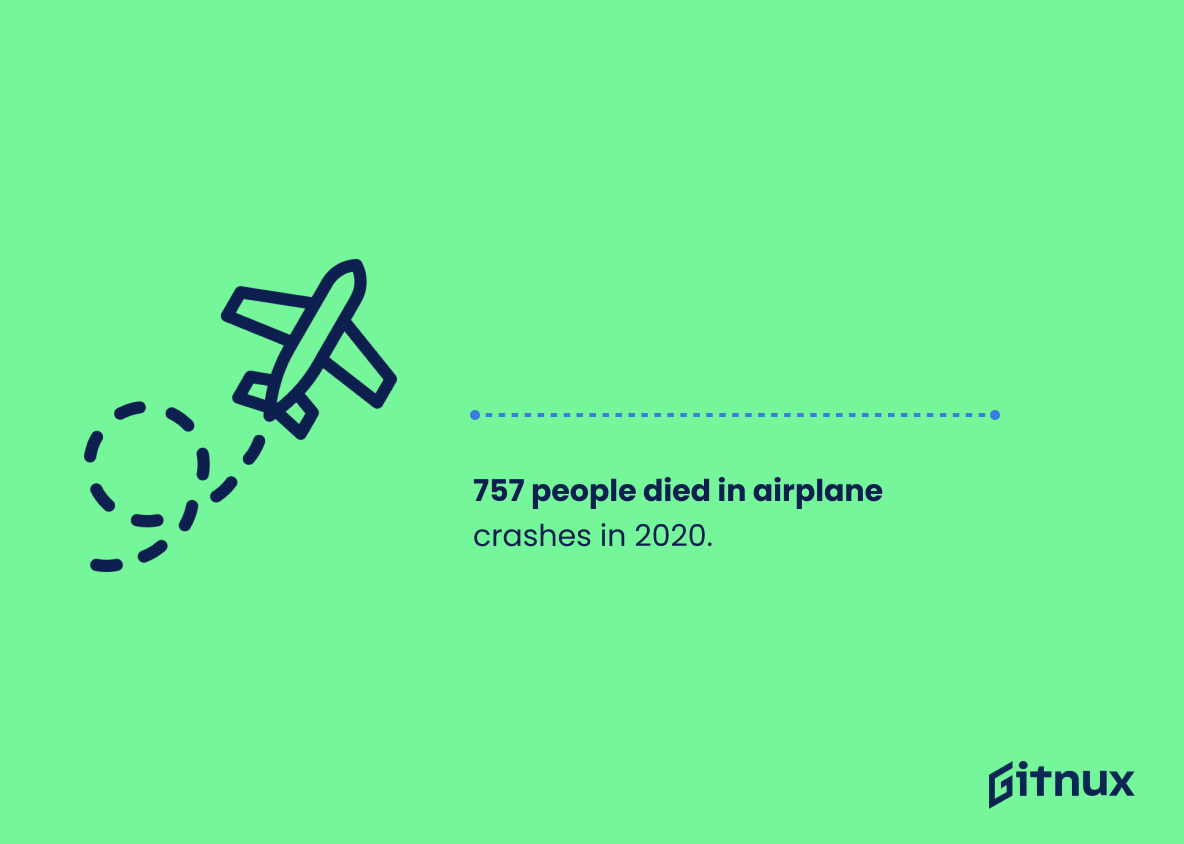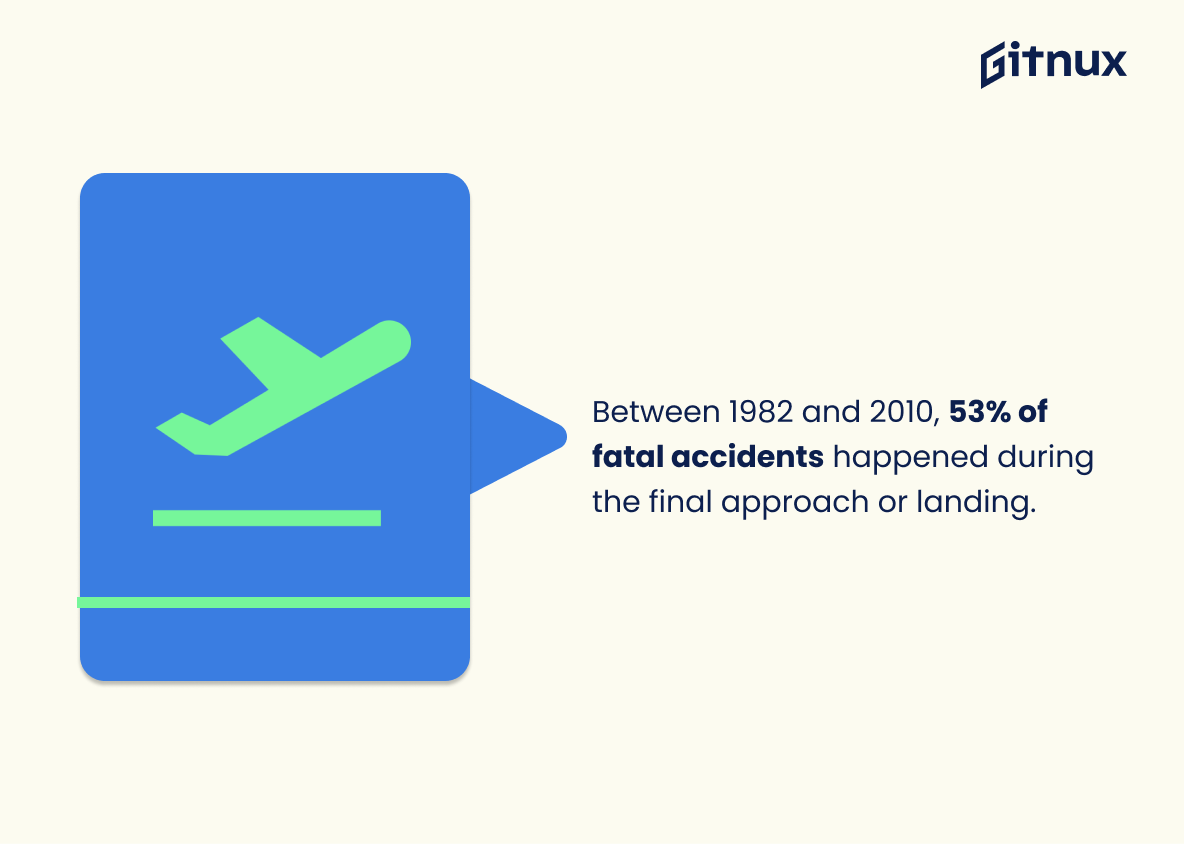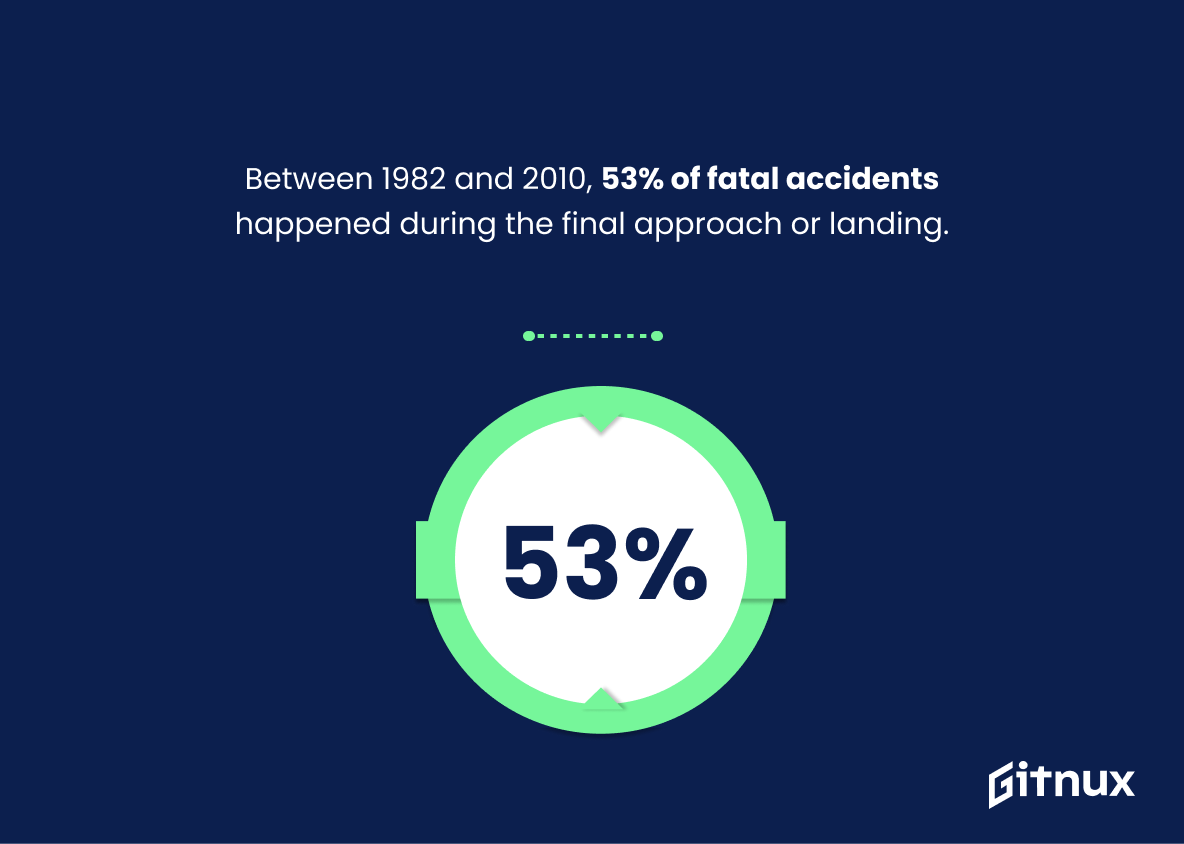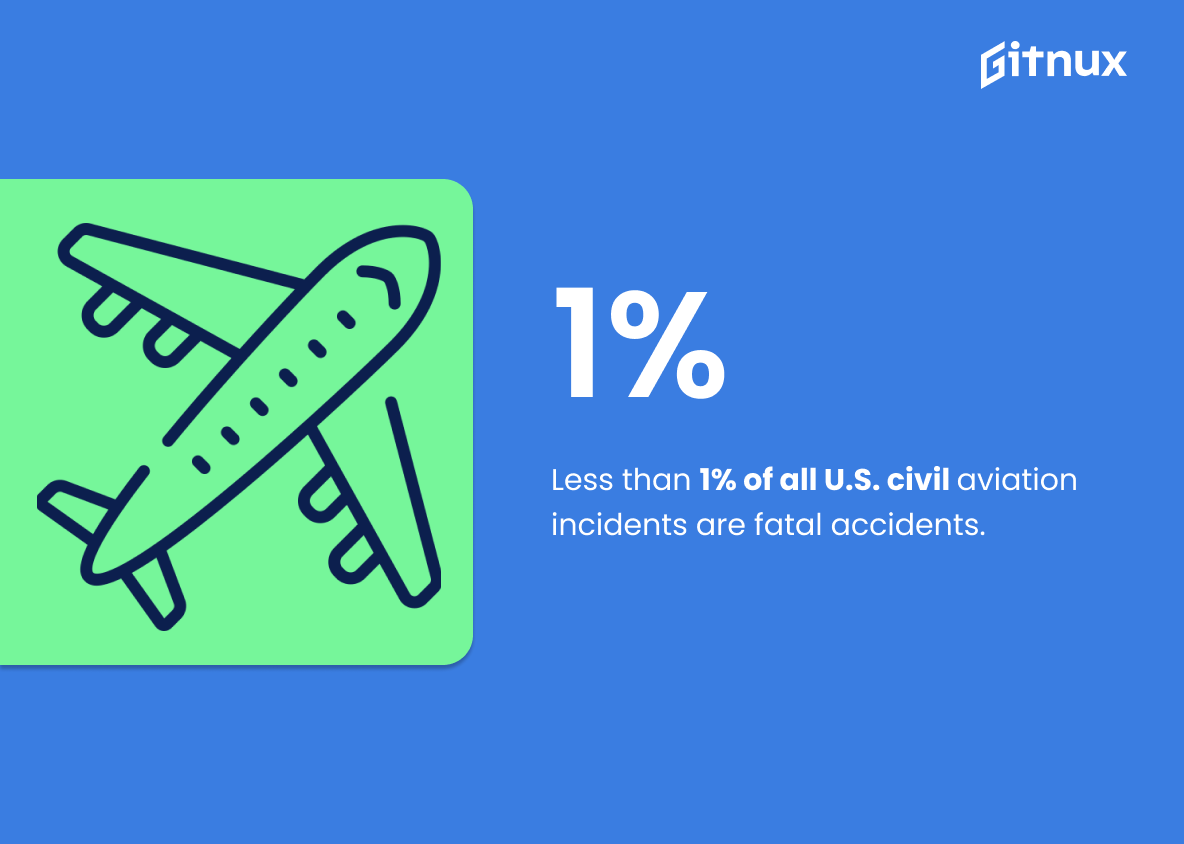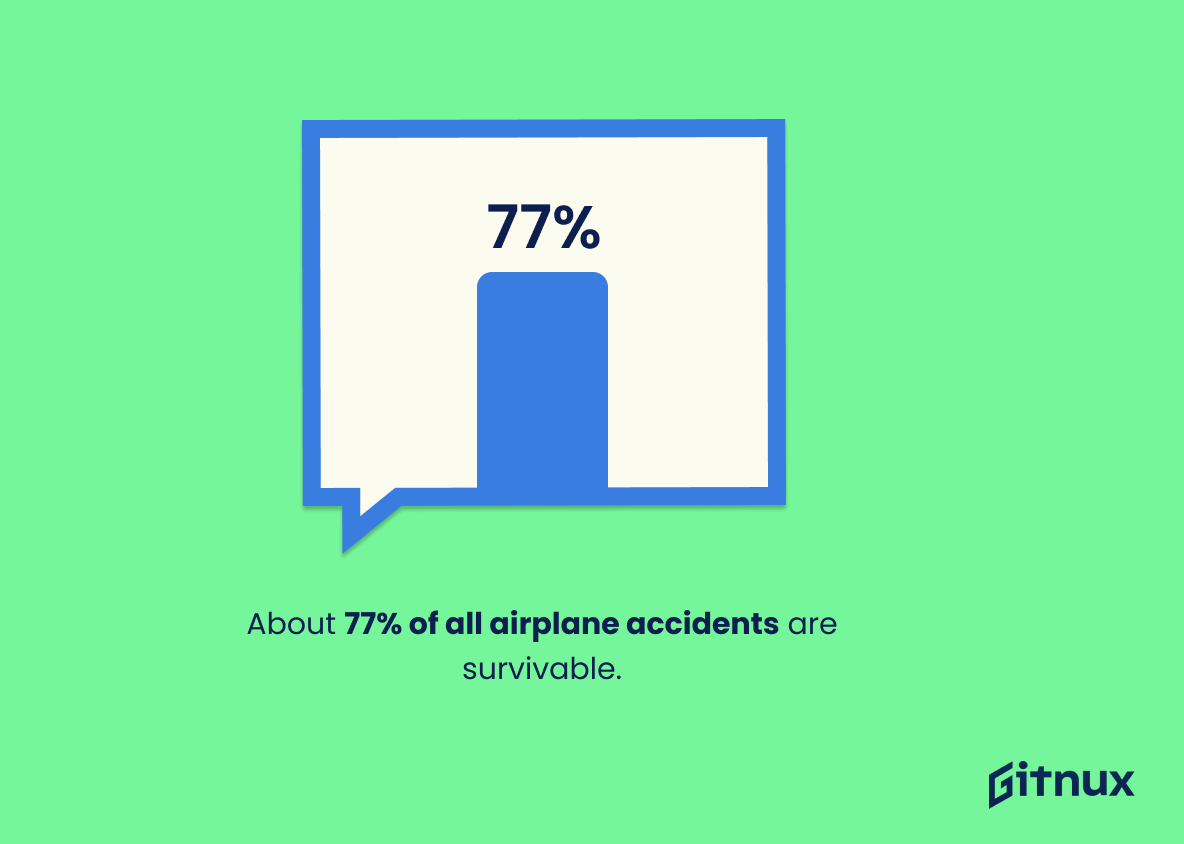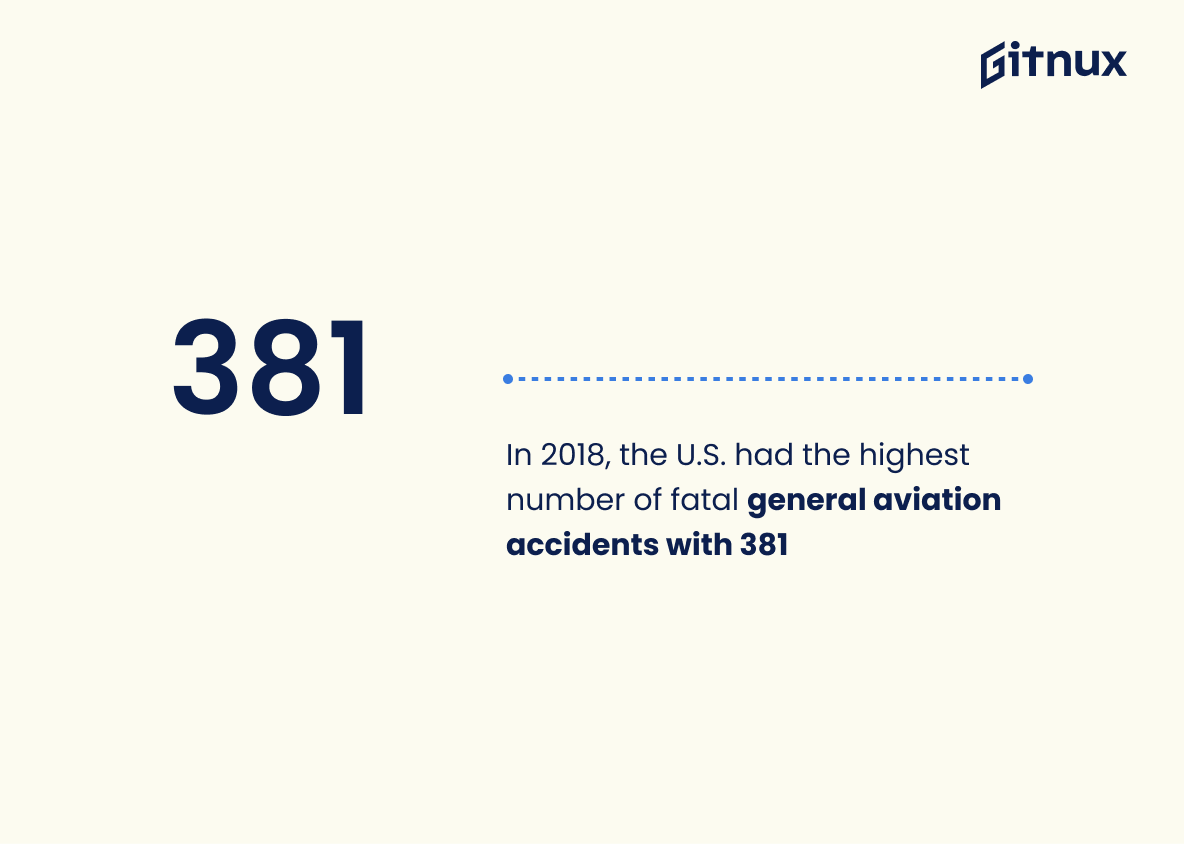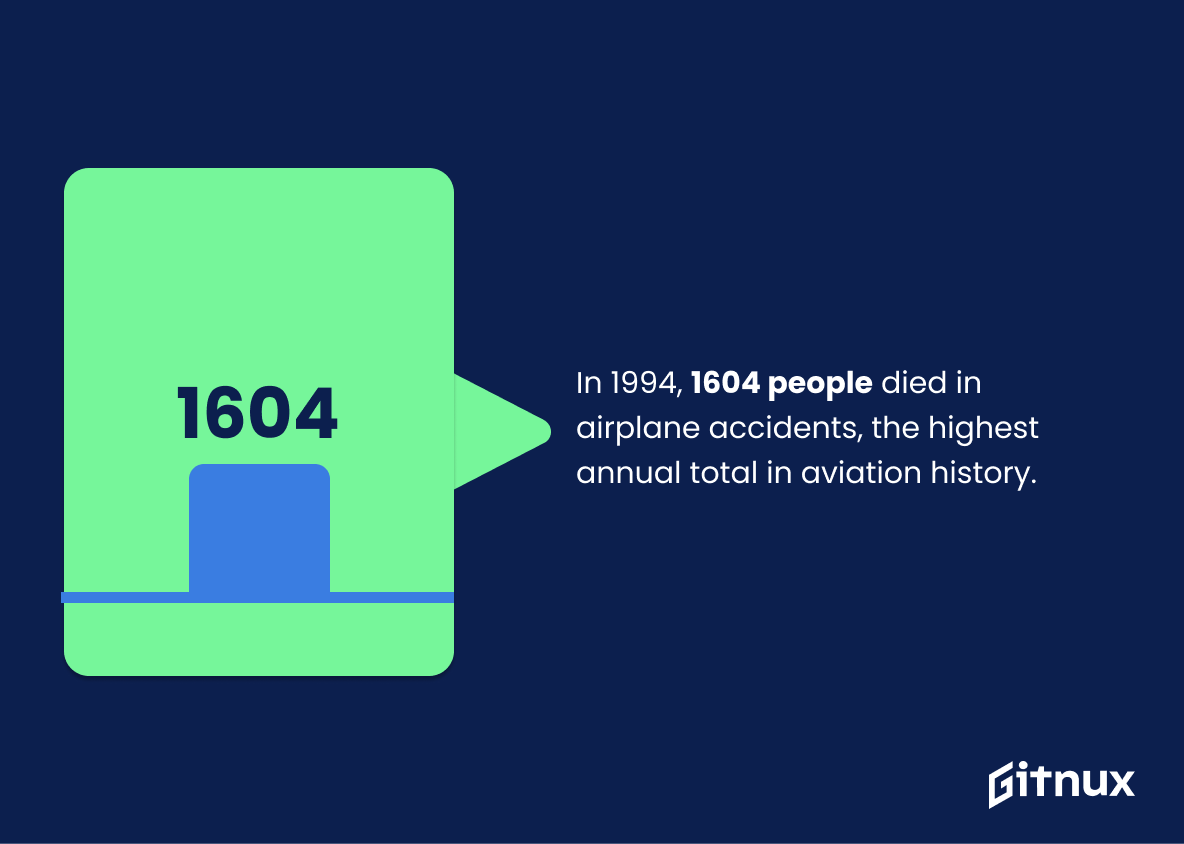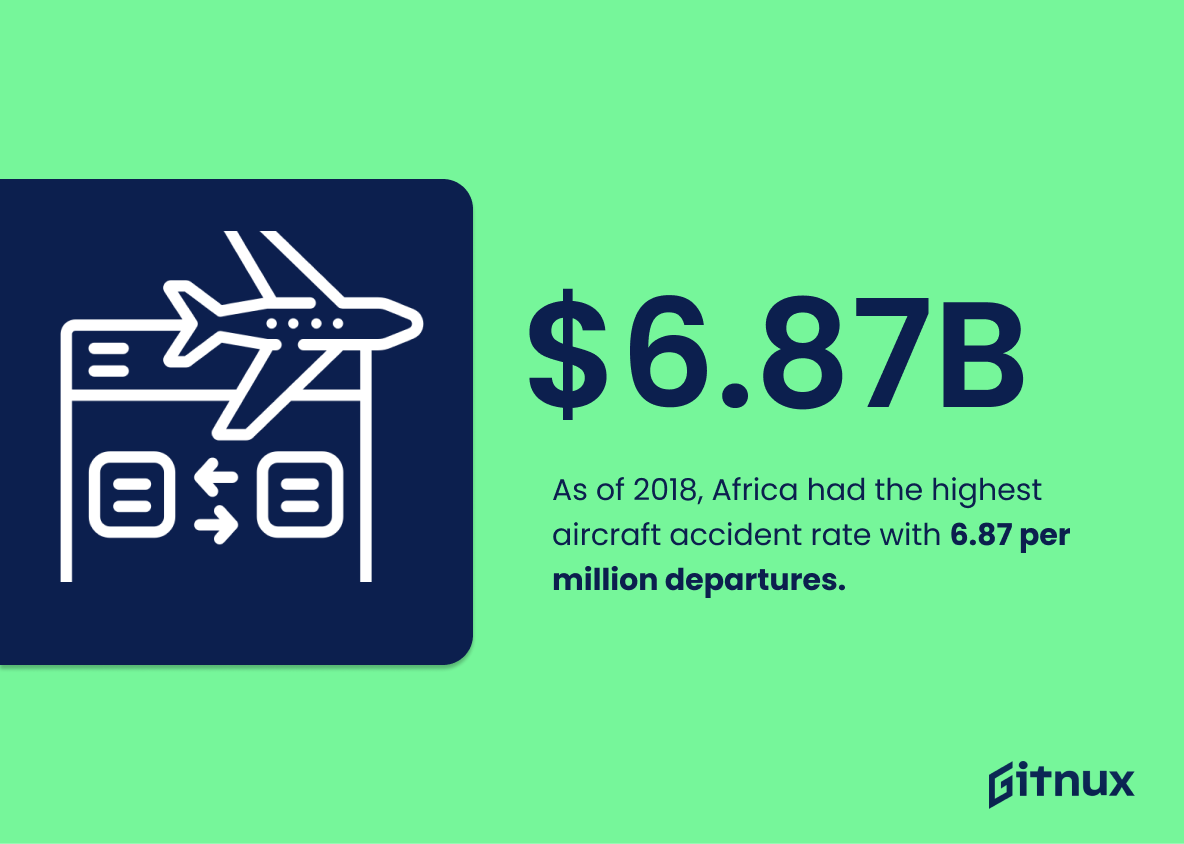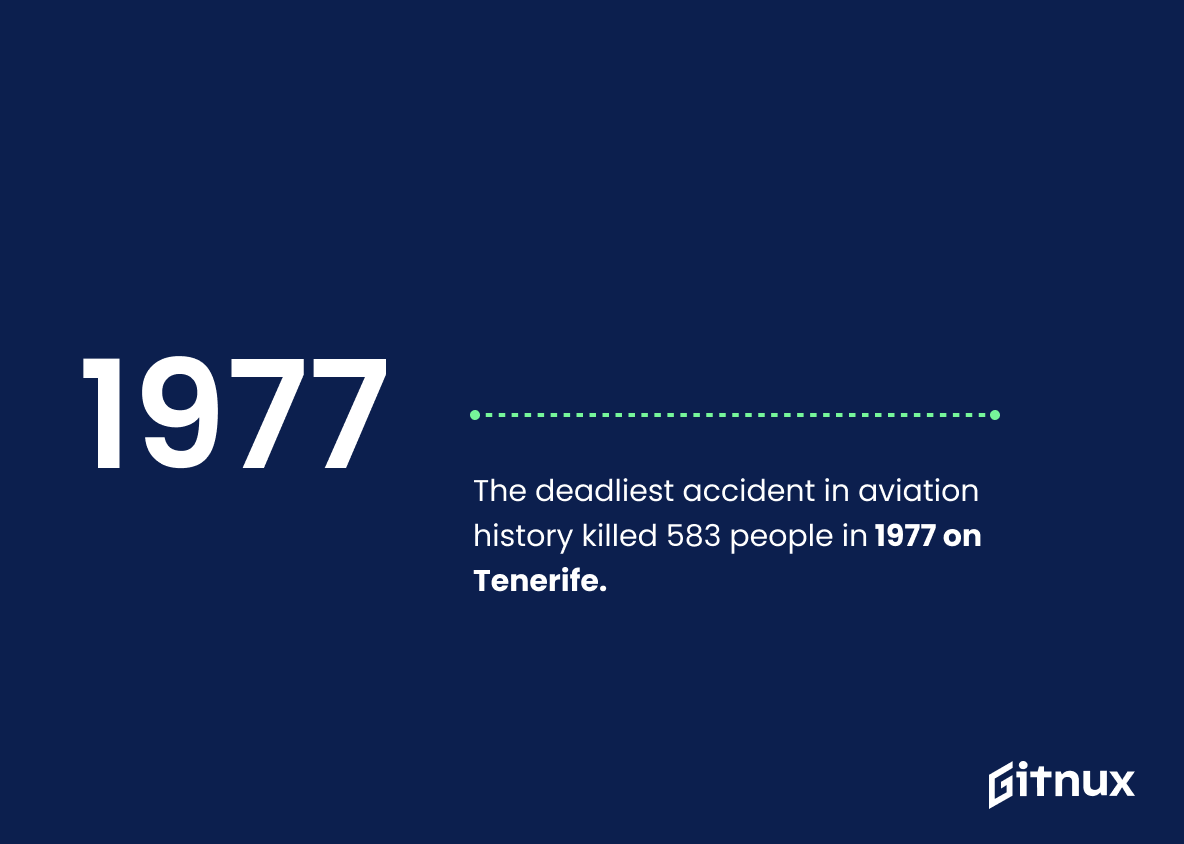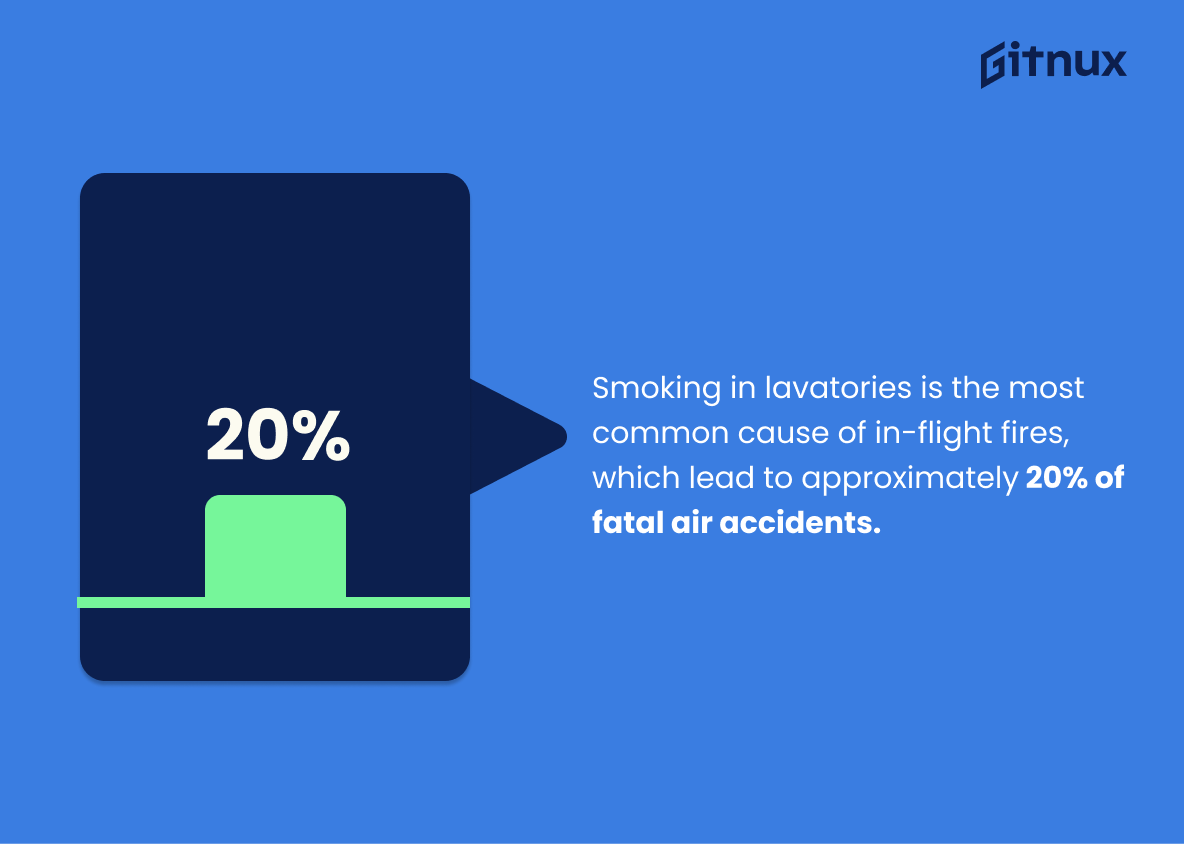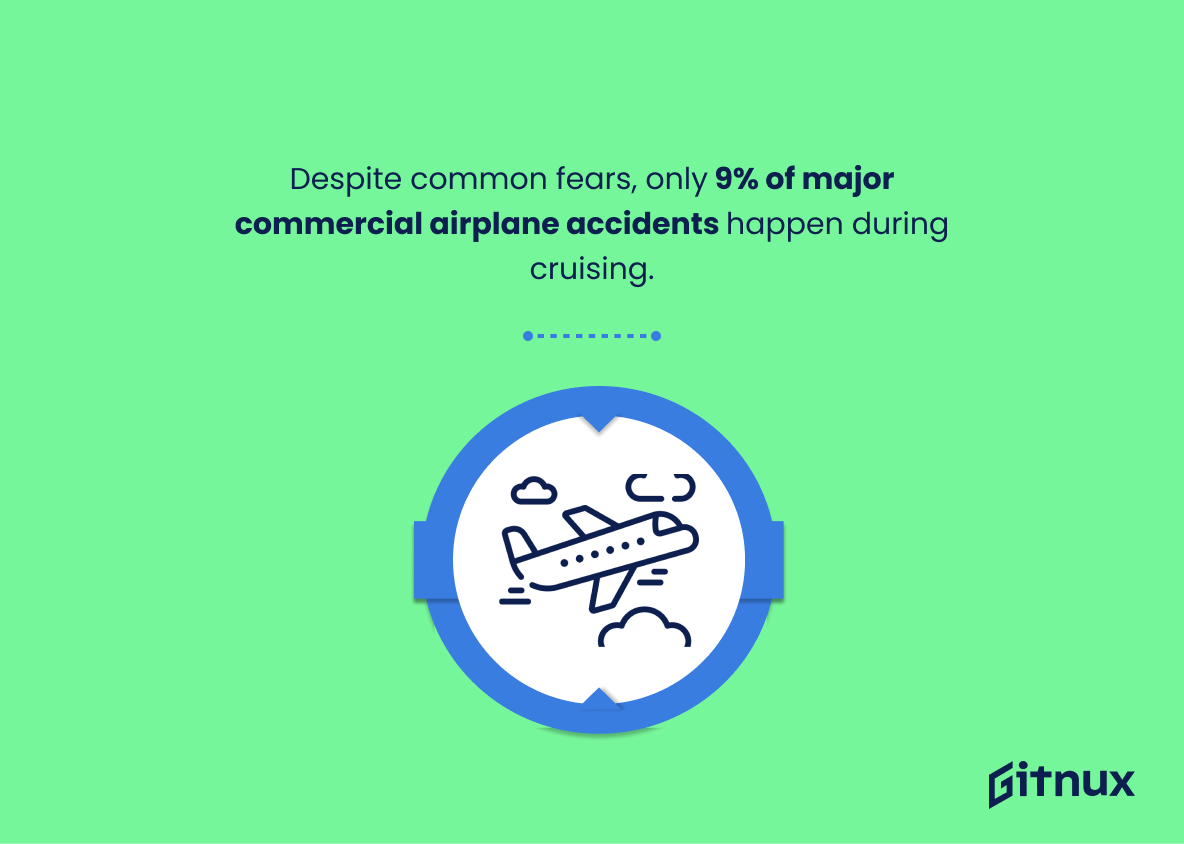The world of aviation is an intricate network of complex systems, professional personnel and advanced technology. It is a realm that requires meticulous attention to detail, especially in matters concerning safety. Despite significant strides in technology, air travel – like any mode of transportation – is not entirely exempt from accidents.
Everyone acknowledges that they exist, but hardly anyone has a clear understanding of the exact numbers. Airplane crash statistics provide a true picture of the safety, or lack thereof, in the air. This blog post dives into the realm of airplane crash statistics and brings into perspective how such significant data shapes global aviation safety standards.
The Latest Airplane Crash Statistics Unveiled
On average, there is one fatal accident per 2 million flights globally.
This pivotal figure of one fatal accident per 2 million flights globally serves as an eye-opening revelation, shining light on the profound magnitude of airline safety. Anchored in this statistic, we can interpret the rare nature of such catastrophic events, contrasting them against the public’s common fear of flying.
By putting the narrative of a blog post on Airplane Crash Statistics into perspective, it eases concerns while offering a reality check – emphasizing that the occurrence of fatal accidents is much less frequent than one might typically envision. In essence, this crucial number adds an additional layer of comprehension and reinforces the predominant theme of the blog post – the true probability of airplane disasters.
86% of airplane accidents occur during the flight phase of departure or approach.
Unraveling a thunderbolt amidst the clouds of aircraft incidents, a staggering 86% of airplane accidents are witnessed during take-off or landing. This frenetic figure accentuates the realities of aviation risks, underscoring the significance of heightened attentiveness, rigorous safety protocols, and advanced training for pilots during these crucial flight stages.
Amidst a discussion on airplane crash statistics, this arresting detail slices through the fog, optimizing risk mitigation strategies, refueling safety debates, and recalibrating conceptions about where and when these mishaps occur the most.
757 people died in airplane crashes in 2020.
Highlighting the figure of 757 fatalities from airplane crashes in 2020 brings to the fore the gravity of the situation and underlines the critical urgency of aircraft safety measures. Such a striking number allows us to grasp the scale and magnitude of the issue, painting a vivid and sobering picture of the risks associated with air travel. Anchoring our discussion on this figure, we deliver a potent call for reassessing and enhancing aviation safety protocols, thus fulfilling the purpose of this blog post — to instigate constructive dialogue, inspire radical innovation, and draw attention towards the life-saving imperatives of air travel safety.
Between 1982 and 2010, 53% of fatal accidents happened during the final approach or landing.
Painting a vivid picture of aviation safety, the statistic that 53% of fatal accidents occurred during the final approach or landing between 1982 and 2010 uncovers an undeniable truth: the most critical moments in a flight are not during cruising altitude but as the wheels are about to touch down.
It highlights a tightrope walked by pilots at the end of each journey, where accuracy and response under pressure can be the difference between life and death. The data reinforces areas requiring further investment towards enhancing safety measures, pilot training and technology advancement in landing procedures.
For readers, it’s an intriguing reminder that perceptions of danger are not always where reality places them. So while the notion of soaring high in the sky might seem the scariest part to many, it’s the grounding point that requires our most unwavering attention. This statistic, therefore, is a timely revelation and a central player in the narrative of airplane crash statistics.
Less than 1% of all U.S. civil aviation incidents are fatal accidents.
Navigating the terrain of airplane crash statistics can often seem daunting or downright unnerving. Yet, one statistic offers a beacon of hope. You’ll be relieved to know that fatal accidents constitute less than 1% of all U.S. civil aviation incidents.
Pondering this data nugget helps shed light on the overall safety record of civil aviation in the U.S. It represents irrefutable evidence of the relentless improvements made by industry pioneers and safety regulators alike to ensure that skies remain friendly. The proverbial landscape of air travel may be riddled with turbulence and the occasional storm, but this statistic acts as a reminder that no matter how rough the ride, the chances of a catastrophic end are extremely minuscule.
About 77% of all airplane accidents are survivable.
Shining a hopeful light on a rather shadowy subject, the statistic clearly underscores that a significant majority, about 77%, of all airplane accidents, according to the data, actually have a survivable outcome. In the realm of Airplane Crash Statistics, this creates a counterbalance to the prevailing assumption many harbor that such accidents always lead to dire outcomes.
It provides an important perspective, a silver lining if you may, that underlines the advancements in aviation safety, crafting an intricate framework of rescue and disaster management systems alongside robust aircraft designs, which function effectively even in the face of adversity. This percentage indeed resonates with the progress made in the industry, instilling a sense of reassurance amidst the readers’ possible fear of flying.
In 2018, the U.S. had the highest number of fatal general aviation accidents with 381.
Spotlighting the poignant reality of 2018, the U.S. registered an unsettling record of 381 fatal general aviation accidents – a number unparalleled globally. Serving as a stark reminder of the risks blacklining the aviation industry, this figure not only zooms in on the harsh probabilities of air travel, but also helps anchor a deeper understanding of airplane crash statistics.
Most importantly, this chilling data serves as a clarion call for enhancing aviation safety measures, driving urgent innovations in aircraft design, and revamping flight training programs. In essence, it underscores the imperatives of risk management in this constantly evolving industry, turning the spotlight firmly towards the need for relentless improvement in aviation safety standards.
In 1994, 1604 people died in airplane accidents, the highest annual total in aviation history.
Highlighting the historical apex of aviation accidents, which occurred back in 1994, underscores an alarming, yet pivotal moment in the chronicles of flight safety. The staggering death toll from that year serves as a significant benchmark which, when juxtaposed against current data, provides us a visual representation of the progress we’ve made over the years in enhancing aviation safety.
It is this darker episode from the past that has fueled concerted safety efforts. So, in essence, the sobriety of these figures fuels the journey towards safer skies. Thus, the blog post uses this statistic not only as a grim reminder of our past shortfalls but also to demonstrate how far we have come, and how much further we can go in ensuring safe flights for millions worldwide.
The risk of dying in an airplane crash is about 1 in 11 million.
Peeling back the layers of fear often associated with airplane crashes, the statistic serves as a comforting beacon of reality. It underscores the fact that air travel, rather than triggering anxiety, should inspire confidence.
With the odds standing at an extraordinarily remote 1 in 11 million, this figure defies the turbulence of apprehension, demonstrating that the risk of dying in an airplane crash is remarkably low. Narrating an eloquent tale of safety, this statistic adeptly reframes perceptions, anchoring the message of the blog post firmly in the terrain of trusted data.
As of 2018, Africa had the highest aircraft accident rate with 6.87 per million departures.
In casting a spotlight on the stark realities within the world of Airplane Crash Statistics, one cannot overlook the harsh truth highlighted by the 2018 data – Africa recording an aircraft accident rate of 6.87 per million departures, the highest globally.
This figure – a grim toll – is instrumental in understanding the safety disparities between different geographical regions. The statistic is a glaring stop sign on the highway of progress emphasizing the urgency for strategizing effective, life-saving solutions to elevate aviation safety standards in Africa.
The Boeing 737-800 has had the most accidents of any commercial airliner, with 194 since 2001.
Delving into the astounding depths of airplane crash statistics, one fact leaps out with jarring clarity – the Boeing 737-800 holds the unenviable title for the most accidents of any commercial airliner, with a staggering record of 194 incidents since 2001. This riveting data finds prime relevance in its stark depiction of inherent risks involved and potential safety concerns associated with this particular model.
It paints a vivid picture of vulnerability within commercial air travel, inspiring a deeper reflection on airplane safety protocols, manufacturing standards, and the effectiveness of pre-existing guidelines. This statistic, offers a window to explore a universe of untold stories – be it human errors, mechanical failures, or external factors, that contribute to such accidents. Thus, it pins the map of air safety discussions, serving as a stark reminder of an industry’s persistent struggle for safer skies.
The deadliest accident in aviation history killed 583 people in 1977 on Tenerife.
Drawing from the chronicles of aviation history, the Tenerife catastrophe of 1977, which tragically ended 583 lives, serves as a stark reminder and a grim milestone. In the realm of airplane crash statistics, this ominous event echoes as the pinnacle of aviation disasters, offering pivotal insights into the severe consequences of flight accidents.
It provides a chilling reference point, emphasizing the extensive magnitudes that airplane crashes could reach under dreadful circumstances. Furthermore, it stands as incontrovertible proof of the necessity for relentless advancement in aviation safety measures, underscoring the importance of each statistic in our pursuit of a safer airborne future.
Smoking in lavatories is the most common cause of in-flight fires, which lead to approximately 20% of fatal air accidents.
Diving into the world of Airplane Crash Statistics, one can’t help but notice a startling revelation. Surprisingly, it’s not engine failures or ill weather, but rather, smoking in lavatories tailing as the foremost instigator of in-flight fires. More astonishingly, this seemingly insignificant act contributes to a staggering 20% of fatal air accidents.
Unmasking this common yet dangerous habit onboard not only enhances our understanding of air crash causes but also underscores the urgent need for stringent policies and effective passenger education about in-flight safety. It vividly underscores the potential threats hiding in unassuming places and actions, and indeed, charts a course for pro-active measures to make skies safer.
Despite common fears, only 9% of major commercial airplane accidents happen during cruising.
Unraveling this statistic in the prose of an intriguing blog on Airplane Crash Statistics, it spotlights an unexpected counter-narrative to widespread anxieties about mid-flight safety. Contrary to prevailing belief, a meager 9% of major commercial airplane accidents occur during cruising – a fact that flips our apprehensions on their head.
This fleeting revelation introduces a profound question about our deeply embedded fears: Are they grounded in reality or merely in misconstrued perceptions? It underscores the imminent need to reassess our understanding of airplane accidents, and shifts the focus from the frequently perceived danger zones to the actual ones. Thus, it unveils a new layer of complexity and piques curiosity for further investigation into the when and why behind the high-stakes domain of airplane crashes.
Conclusion
Airplane crash statistics present a paradox that’s difficult to ignore: while rare, these incidents are impactful and are often surrounded by extensive media coverage. Notably, despite the perceptual anxiety, flying is quantitatively recognized as one of the safest modes of transport. With constant improvements in technology, stricter regulations, and continual professional training, aviation safety continues to move in a positive direction, steadily reducing the number of accidents each year.
The fear factor related to airplane crashes should not overshadow the fact that the aviation industry goes to great lengths to ensure passenger safety. The statistical probability of being involved in an airplane crash is exceedingly low, emphasizing that it is indeed safer to fly than to undertake other modes of travel, like driving.
References
0. – https://www.www.ntsb.gov
1. – https://www.www.huffpost.com
2. – https://www.www.iata.org
3. – https://www.www.1001crash.com
4. – https://www.www.faa.gov
5. – https://www.flightsafety.org
6. – https://www.www.airlineratings.com
7. – https://www.www.flyingmag.com
8. – https://www.www.icao.int
9. – https://www.www.to70.nl
10. – https://www.www.bts.gov
11. – https://www.www.thetravel.com
12. – https://www.www.planecrashinfo.com
13. – https://www.asrs.arc.nasa.gov


